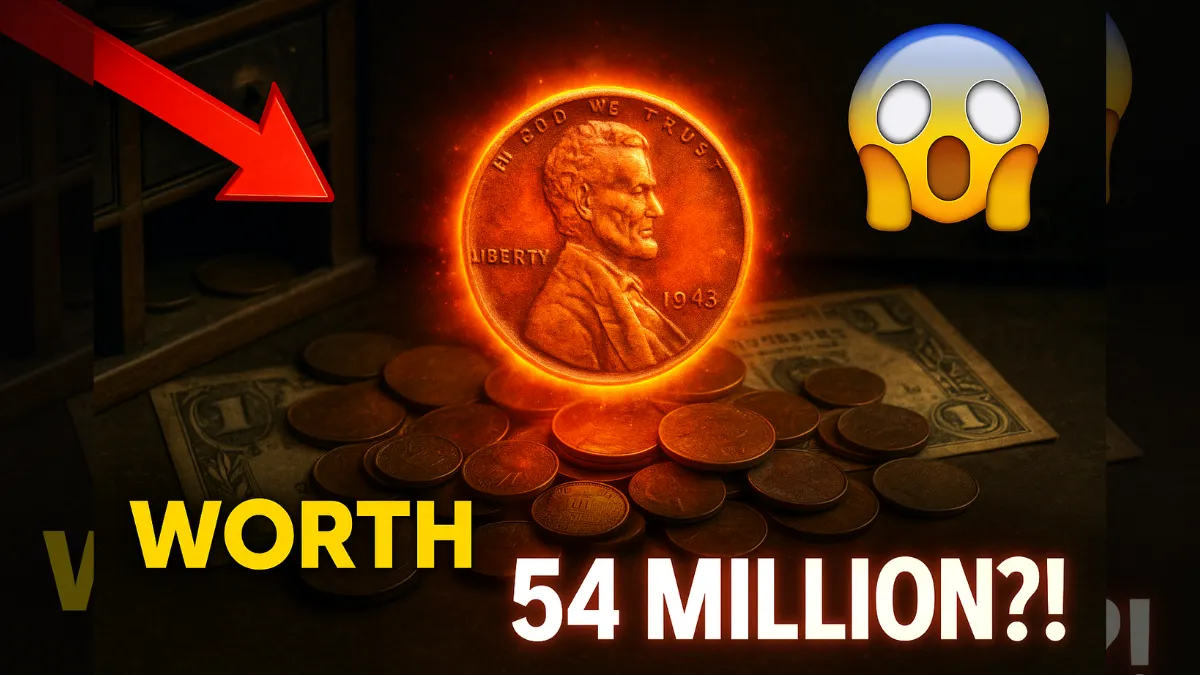It might look like just another old coin, but this tiny copper piece holds immense value and mystery. For collectors, it’s more than currency—it’s a golden ticket. Few coins have sparked as much fascination or excitement. If you ever find one, it might just change your financial future in a heartbeat.
Wartime Sacrifice and a Coining Mistake
During World War II, the United States faced a severe copper shortage, as the metal was crucial for military equipment and ammunition production.
To save copper for the war effort, the U.S. Mint decided to make pennies out of zinc-coated steel instead. However, a few copper blanks accidentally slipped through and were used to mint 1943 pennies—resulting in one of the most prized errors in American coinage history.
A Hidden Treasure Revealed
The error wasn’t discovered right away. In fact, it took until 1947 for someone to recognize the mistake—a Massachusetts teenager named Don Lutes Jr. found one in his lunch change.
While some doubted its authenticity, experts later confirmed it was the real thing. Only around 40 genuine 1943 copper pennies have been documented to this day, with Philadelphia mint coins being the most common and those from Denver and San Francisco even rarer.
How to Identify a Real 1943 Copper Penny
Given the coin’s extreme value, countless fakes have been made. Here’s how to spot a true one: real copper pennies from 1943 are not magnetic, unlike the steel versions.
They also weigh 3.11 grams, which is heavier than the lighter steel pennies. True examples are solid copper—not copper-plated steel—and should show authentic 1943 details with no alterations. For certainty, professional grading services like PCGS or NGC are your best bet.
Big Money for a Tiny Coin
While online rumors inflate its worth to $54 million, no sale has reached that. Still, actual auction prices are astounding. A top-grade penny from the famous Simpson Collection fetched $1.7 million in 2010. A 1943-D penny—one of the scarcest variants—sold for $1 million.
A 1943-S version brought in $282,000 in 2018. And in 2019, the original coin discovered by Don Lutes Jr. sold for $204,000, even in circulated condition.
The People and Stories Behind the Coin
The journey of the 1943 copper penny involves more than just numbers—it features real people and collectors who recognized its worth. Don Lutes Jr. kept his penny for more than seven decades before selling it.
Another example was owned by Louis Eliasberg, a renowned collector known for assembling every U.S. coin ever made. These coins are not just valuable—they are slices of American history and the stories of those who cherished them.
The Hunt Continues
Since their discovery, people across the country have checked every penny they come across, hoping to uncover one of these rare treasures. And while the odds are low, a few have surfaced in pocket change or old piggy banks.
This sense of hope keeps the hunt alive—fueling collectors and casual coin checkers alike. The mystery and the potential for a big find make this hunt uniquely exciting and enduring over generations.
More Than a Coin—A Cultural Icon
The 1943 copper penny has become more than a rare collectible—it’s a symbol of wartime sacrifice, human error, and the immense value hidden in everyday items. Its story blends history, economy, and the thrill of discovery. For many Americans, it’s a reminder that even the smallest things can hold untold worth. This penny isn’t just money; it’s a cultural artifact that continues to captivate the imagination of millions.
Debunking Popular Myths
Despite many viral claims, no automaker—including Henry Ford—ever offered a free car in exchange for one of these pennies. The claim that one sold for $54 million is also entirely false.
Furthermore, the belief that there are thousands of these coins out there is a myth—only about 40 have been verified. While do-it-yourself tests can offer clues, confirmation should always come from professional coin grading experts.
Why It Still Captures Our Imagination
Collectors and enthusiasts prize the 1943 copper penny not just for its scarcity, but for its fascinating backstory. The combination of historical context, accidental rarity, and huge market value makes it a dream find.
As more high-quality examples get locked into private collections, their market value is expected to rise. It’s not hard to imagine the next pristine specimen setting a new record north of $2 million.
Final Thought: Always Check Your Change
That small coin at the bottom of your drawer might hold more than spare value—it could be a legendary mistake worth a fortune. With just 40 known to exist, finding a 1943 copper penny is like winning the lottery for collectors.
So next time you’re sorting through spare change or checking a coin jar, keep your eyes open. Your ordinary penny might just be an extraordinary piece of American history.
FAQs
How can I tell if my 1943 penny is real copper?
Try a magnet—copper won’t stick. Real ones weigh 3.11g. Still, only a grading service can confirm it’s genuine and not altered.
Why did the U.S. Mint use steel for pennies in 1943?
To preserve copper for military use during WWII, the Mint used zinc-coated steel instead for the year’s penny production.
How valuable is a 1943 copper penny?
Depending on condition and mint mark, they can sell from six figures to over $1 million at reputable auctions and private sales.
Are most 1943 copper pennies found today authentic?
No. Many are fakes, either copper-plated or altered. Only a small number are real, and expert authentication is essential.
